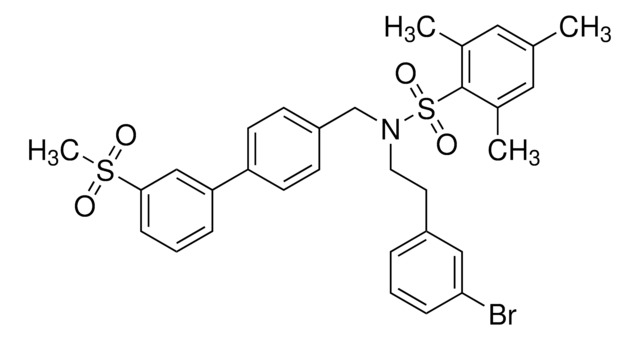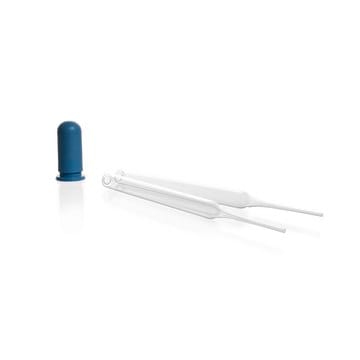SML1510
SR9238
≥98% (HPLC)
Synonym(s):
Ethyl 5-((2,4,6-trimethyl-N-((3′-(methylsulfonyl)-[1,1′-biphenyl]-4-yl)methyl)phenylsulfonamido)methyl)furan-2-carboxylate
Sign Into View Organizational & Contract Pricing
All Photos(1)
About This Item
Empirical Formula (Hill Notation):
C31H33NO7S2
CAS Number:
Molecular Weight:
595.73
UNSPSC Code:
12352200
NACRES:
NA.77
Recommended Products
Quality Level
assay
≥98% (HPLC)
form
powder
color
white to beige
solubility
DMSO: 5 mg/mL, clear (warmed)
storage temp.
2-8°C
Biochem/physiol Actions
SR9238 is liver selective LXR inverse agonist with high potency for both LXRα and LXRβ with an IC50 of 214 nM for LXRα and 43 nM for LXRβ. Metabolic syndrome is often accompanied by liver problems, such as fatty liver (nonalcoholic hepatosteatosis), associated with increased lipogenesis. Liver X receptors α and β (LXRα and LXRβ) are known to induce lipogenesis by increasing transcription of lipogenic enzyme genes, so it was hoped LXR antagonists might be of use in fatty liver. In a mouse model of nonalcoholic hepatosteatosis, SR9238 reduced the expression of lipogenic genes, and suppressed hepatic lipogenesis, inflammation and hepatic lipid accumulation. It was also effective in reduction of hepatic fibrosis in another study. Additionally in diet induced obese mice, SR9238 suppressed plasma cholesterol levels.
Storage Class
11 - Combustible Solids
wgk_germany
WGK 3
flash_point_f
Not applicable
flash_point_c
Not applicable
Certificates of Analysis (COA)
Search for Certificates of Analysis (COA) by entering the products Lot/Batch Number. Lot and Batch Numbers can be found on a product’s label following the words ‘Lot’ or ‘Batch’.
Already Own This Product?
Find documentation for the products that you have recently purchased in the Document Library.
Grace Ampem et al.
Cell and tissue research, 378(1), 81-96 (2019-04-24)
Self-renewal of macrophages is important for the healthy development and replenishment of tissue-resident macrophage pools. How this mechanism is controlled by endocrine signals is still largely unexplored. Here, we show that the endocrine disruptor bisphenol A (BPA) increases macrophage self-renewal.
Our team of scientists has experience in all areas of research including Life Science, Material Science, Chemical Synthesis, Chromatography, Analytical and many others.
Contact Technical Service








